Disclosure: This article contains affiliate links. We may earn a commission from purchases at no extra cost to you, which helps our travel content.
The first time I stood on Wyoming soil as a teenager visiting my grandfather's ranch, something profound shifted in me. The endless horizon, the dance of grass in the wind, the relationship between horse and human—it all spoke to something ancient in my soul. Now, as both a photographer and a frequent visitor to the world's great plains, I've found no better distillation of Western heritage and horse culture than Cheyenne Frontier Days. Known as 'The Daddy of 'em All,' this 10-day celebration of rodeo, music, and Western traditions is a photographer's paradise—if you know how to approach it.
Planning Your Photographic Approach
When I first tackled Frontier Days with my camera, I was overwhelmed—rodeo events happening simultaneously, parades winding through downtown, Native American dancing, carnival lights, and the constant movement of 200,000+ visitors. The key to success? Strategic planning.
I now divide Frontier Days into distinct photographic categories: action (rodeo events), portraiture (competitors and attendees), cultural documentation (traditions and ceremonies), and landscape (the arena and grounds within the broader Wyoming setting).
Start by investing in a versatile telephoto lens—my 70-200mm f/2.8 has been invaluable for capturing rodeo action while maintaining distance. For portraits and environmental shots, I switch to my 24-70mm, which offers flexibility without sacrificing image quality.
Review the official schedule carefully and mark your priorities. The Grand Parade, Championship Rodeo events, and Behind the Chutes tours offer completely different photographic opportunities. Don't try to shoot everything—focus on what resonates with your style.

💡 Pro Tips
- Purchase tickets for multiple days to revisit key events with different lighting conditions
- Contact the media office in advance for possible special access opportunities
- Research rodeo terminology and events beforehand to anticipate action moments
Mastering Rodeo Action Photography
Rodeo photography presents unique challenges—unpredictable action, harsh lighting contrasts, and dust that seems magnetically attracted to camera sensors. After five years of shooting frontier days, I've developed a system that works.
First, technical preparation: set your camera to continuous high-speed shooting mode and use a shutter speed of at least 1/1000s to freeze action. I typically shoot in Aperture Priority (A/Av) mode with Auto ISO (capped at 3200) to maintain flexibility while moving between sun and shadow. For bull riding and bronc events, pre-focus on the chute gate and be ready the moment it opens.
The lens cleaning kit has saved countless shots for me—Wyoming's summer dust is relentless. Keep it accessible and clean your front element between events.
Positioning is everything. The north end of the arena captures dramatic backlit dust clouds during evening events, while the east stands provide the best angle for barrel racing turns. Don't stay fixed—move to different vantage points throughout the day as the light changes.

💡 Pro Tips
- Arrive early to secure spots near the fence for unobstructed shooting angles
- Use burst mode judiciously—focus on anticipating peak action moments
- Pay attention to backgrounds—position yourself to avoid distracting elements
Documenting Western Culture & Portraiture
Beyond the arena, Frontier Days offers rich cultural documentation opportunities. The Behind the Chutes tour provides intimate access to competitors preparing for events—a documentary photographer's dream. Here, I switch to my prime lens for its low-light capabilities and beautiful bokeh when shooting environmental portraits.
The Indian Village and its traditional dancing competitions present both opportunity and responsibility. As someone who photographs diverse horse cultures globally, I approach these moments with respect—always asking permission before photographing individuals, especially elders. The vibrant regalia deserves color accuracy, so I carry a color checker to ensure authentic representation.
For authentic portraits, build rapport first. Many competitors and artisans welcome conversation about their craft. My background visiting my grandfather's Wyoming ranch gives me conversational starting points about horse care and Western traditions. These brief connections often lead to candid, meaningful portraits that capture the spirit of the people who keep these traditions alive.
My experience as a caregiver has taught me to read faces and body language—skills that translate directly to anticipating authentic moments worth capturing. Look for the quiet instances: the nervous competitor checking equipment, the veteran relaxing between events, the child watching wide-eyed as heroes perform.
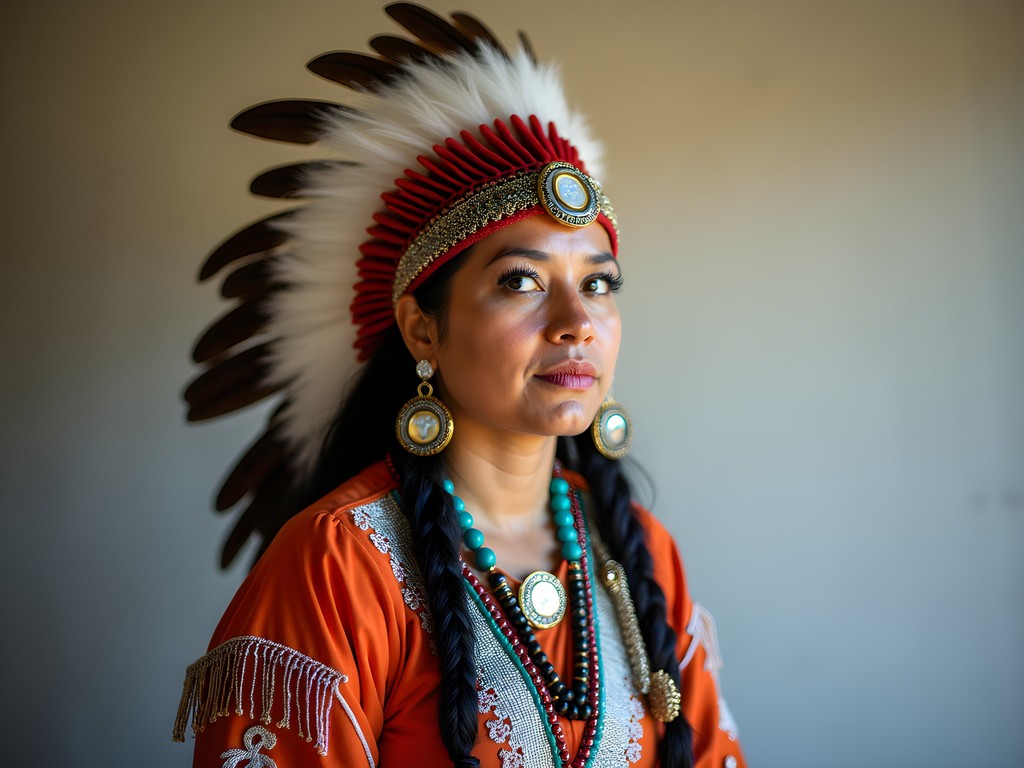
💡 Pro Tips
- Always seek permission before photographing individuals, especially in cultural contexts
- Keep a small photo printer to share prints with subjects—a gesture that builds goodwill
- Listen more than you shoot—understanding stories enhances your visual storytelling
Golden Hour Magic: Landscape Photography Opportunities
While the events captivate most visitors, I've found that the landscape context of Frontier Days offers equally compelling photographic opportunities. The arena and grounds, set against Wyoming's vast skies and distant mountains, create a visual narrative about humanity's relationship with the land—a theme central to my work across plains regions worldwide.
I reserve early mornings and the hour before sunset for landscape work. My tripod is essential for these sessions, especially when incorporating long exposures to capture cloud movement or the transition from daylight to arena lights.
During my last visit, I discovered that Frontier Park's eastern perimeter offers unobstructed views of the arena with the Laramie Mountains as backdrop. Arriving at 5:30 AM provided me with ethereal shots of morning mist rising from the grounds as staff prepared for the day.
For those seeking authentic Wyoming landscapes beyond the event, I recommend driving 30 minutes east to the high plains or west toward the mountains. These brief excursions provide context for the cultural traditions celebrated at Frontier Days—the land that shaped the people.
My go-to setup for these landscape sessions is my wide-angle lens paired with graduated ND filters to balance the often extreme dynamic range of Wyoming skies against the foreground. The expansive perspective helps convey the relationship between the event and the landscape that birthed these traditions.

💡 Pro Tips
- Scout landscape locations the day before you plan to shoot them
- Use the PhotoPills app to predict exactly where the sun will rise/set relative to the arena
- Include human elements in landscape compositions to establish scale and cultural context
Technical Considerations & Gear Recommendations
The challenging conditions at Frontier Days demand thoughtful gear preparation. Wyoming summer weather brings intense sun, sudden thunderstorms, and temperature swings of 30+ degrees within hours. My years photographing on the Mongolian steppes and Argentine pampas prepared me well for these conditions.
My essential kit includes a weather-sealed camera body that handles dust admirably. I carry two camera bodies to avoid lens changes in dusty conditions. For storage, I use multiple smaller capacity cards rather than fewer large ones—this distributes risk if a card fails.
Battery management becomes critical during 12+ hour shooting days. I carry at least four fully-charged batteries and a portable charger for emergency recharging. The dry climate and high elevation drain batteries faster than you might expect.
For carrying gear between locations, I've found my camera backpack perfectly balances protection with accessibility. The side access points allow quick gear changes without setting the bag in the dust or dirt.
Finally, don't underestimate personal comfort. A wide-brimmed hat, high SPF sunscreen, and a refillable water bottle are as essential as any lens. When your body is comfortable, your mind stays creative—something I've learned through long days providing care to others in my primary profession.

💡 Pro Tips
- Bring lens cloths in sealed containers to prevent them from becoming contaminated with dust
- Use gaffer tape to secure lens hoods—Wyoming winds can send them flying
- Consider UV protection for both yourself and your gear—the high elevation intensifies sun exposure
Final Thoughts
As the final sunset bathes Frontier Park in that distinctive Wyoming golden light, I'm always struck by how this event connects us to both history and landscape. Through my lens, I've witnessed not just a rodeo or festival, but the living heritage of the American West—a tradition shaped by the very plains and grasslands that have captured my heart from Wyoming to Mongolia.
Photographing Frontier Days requires technical skill, cultural sensitivity, and physical stamina. But the rewards are immeasurable: images that capture not just events, but the spirit of a place and its people. Whether you're documenting the explosive power of a bronc rider, the quiet dignity of traditional dancers, or the landscape that contextualizes it all, approach each frame with both preparation and openness.
As someone who divides his life between providing care to others and documenting the world's great plains, I've found that the same principles apply to both: patience, observation, and genuine connection yield the most meaningful results. I hope to see you in Cheyenne next July, cameras in hand, ready to capture your own vision of the West. Until then, keep your batteries charged and your horizons wide.
✨ Key Takeaways
- Plan your photographic approach by category: action, portraiture, culture, and landscape
- Technical preparation is essential—weather-sealed gear, backup batteries, and dust protection will save your shoot
- Respect cultural contexts when photographing traditional events and always seek permission for portraits
- Balance event photography with landscape work to tell the complete story of Frontier Days
- The best images come after building genuine connections with the people who embody these Western traditions
📋 Practical Information
Best Time to Visit
Last full week of July annually
Budget Estimate
$1,500-2,500 for a week (including accommodations, tickets, and meals)
Recommended Duration
5-7 days
Difficulty Level
Moderate
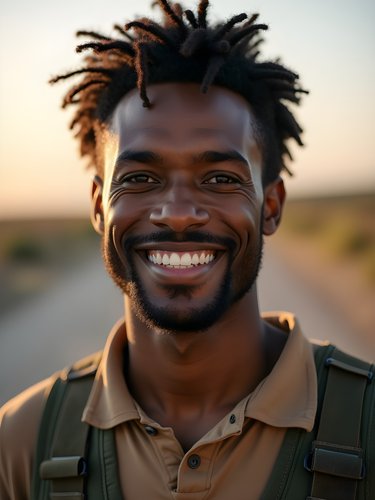
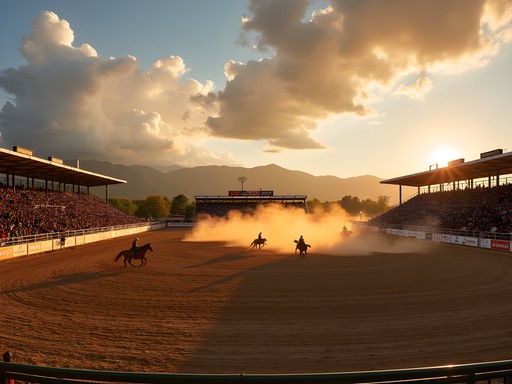







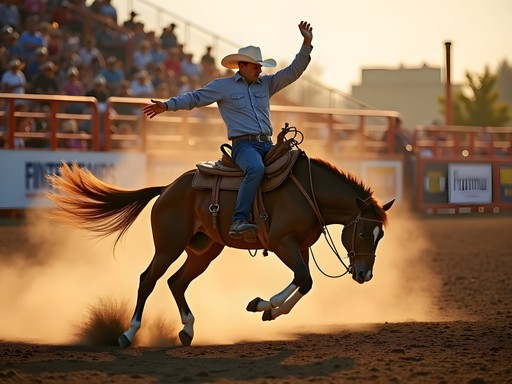
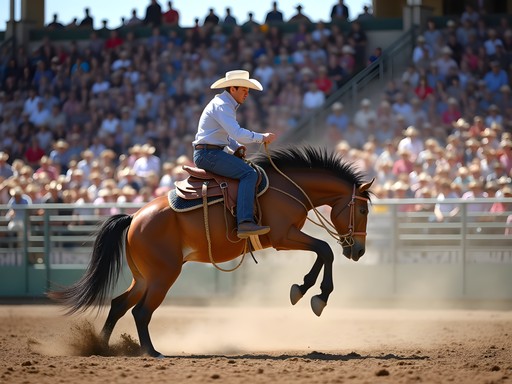





Comments
bluepro
What lens would you recommend for a beginner?
Sophia Gomez
Preston, your post took me right back to my first Frontier Days experience last year! The way you captured that golden hour light on the bucking broncos is masterful. I struggled with my timing during the rodeo events - any specific shutter speed recommendations for beginners trying to freeze those intense moments? I found myself constantly adjusting and missing shots. Your section on Western portraiture was especially helpful - those authentic character studies really tell the deeper story of the event beyond just the action shots.
Preston Campbell
Thanks Sophia! For rodeo action, I typically shoot at 1/1000s or faster with continuous autofocus. The light can be tricky in the arena, so don't be afraid to push your ISO up to 1600 or even 3200 if needed. Better to have a slightly noisier shot than a blurry one!
Sophia Gomez
That's super helpful, Preston. Will definitely try those settings next time!
roamseeker
Wow, these photos are absolutely stunning! Makes me want to book a trip to Wyoming ASAP!
vacationperson
Just wanted to say your guide inspired me to try photographing my first rodeo last month (not Frontier Days, but a smaller local one). I'm not a pro by any means, but your tips about shooting in bursts and focusing on the chutes really helped! That Wyoming light really is something special. I couldn't believe how different the golden hour looks there compared to back home in Ohio. Already planning a trip to Cheyenne next year!
adventureadventurer
I'm bringing my kids (10 and 12) to Frontier Days this summer. Any recommendations for the best family-friendly photo spots where they could also try taking some pictures?
vacationperson
Not Preston, but we took our kids last year! They loved the behind-the-scenes areas during the morning practice sessions. Much less crowded and the cowboys were super friendly about posing with the kids.
Preston Campbell
Great suggestion from @vacationperson! I'd also recommend the Indian Village for colorful cultural photos that kids can take, and the parade downtown is perfect for little photographers - lots of action at a slower pace. The Old West Museum has some interactive exhibits where they can dress up in period costumes too!
Hunter Thompson
Brilliant guide, Preston! I was at Frontier Days last year and completely botched most of my rodeo shots - too slow on the shutter speed and terrible positioning. Your section on anticipating the action is gold! I'm heading back this summer and will definitely be using your tips on shooting from the northeast corner of the arena during morning events. Did you find any particular lens combination that worked best for the night events? I struggled with the arena lighting after sunset.
Preston Campbell
Hey Hunter! For night events, I typically use my telephoto lens wide open at f/2.8 and push the ISO up to 3200-6400 depending on the arena lighting. The key is getting those pre-focused shots as riders burst from the gates. Bring a monopod if you can - it'll save your arms and help with stability!
Hunter Thompson
Thanks Preston! That's super helpful. I'll definitely bring a monopod this time. Can't wait to put these tips into practice!
adventureway
These photos are incredible! That shot of the bronc rider silhouetted against the sunset is magazine-worthy.
Preston Campbell
Thanks so much! That one was a lucky moment when everything aligned perfectly. Right place, right time!
wanderlustdiver
I've never been to a rodeo but your photos make me want to experience it! Is it too crowded to get good shots?
wanderlustdiver
That's a great tip, thanks! Might try to plan a trip for next summer.
nomadway
Not Preston, but I found weekday events are way less crowded than weekends. If you go early in the morning, you can sometimes catch practice sessions with almost nobody around. Perfect for photos!
tripadventurer
Those sunset shots are incredible! Added this to my bucket list.
nomadfan
Just booked my tickets after reading this! Can't wait to try these techniques!
wildlover
You're gonna love it! Get to the grounds early for the best light and fewer crowds.
nomadfan
Thanks for the tip! Any good spots to catch the parade?
sunnyone
Corner of Capitol and Lincolnway has great light in the morning and you can catch them coming around the turn. Bring a step stool if you're short like me!
Venture X
Premium card with 2X miles, $300 travel credit, Priority Pass